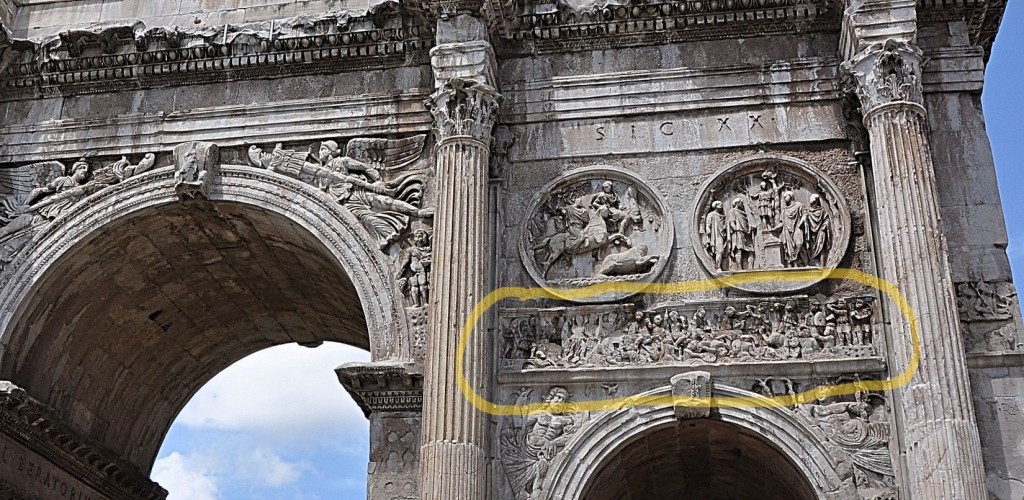The early 4th Century AD was a tumultuous time in the Roman Empire. Diocletin retired in AD 305 and left power to his chosen successors. Maxentius (one of the previous rulers of Diocletian’s Tetracharchy, ruled over the west) declared himself emperor, 306 AD. This was contested by several rivals, igniting a round of civil wars. Constantine (son of Flavious Constantius, d. AD 306, “senior emperor” under Diocletian) emerged as a major contender.
Initially there were several rival claimants to the throne but two primary factions emerged: Constantine vs Mazentius. In AD 312, Constantine and his troops met Maxentius and his army near the Milvian Bridge (located over the Tiber River in northern Rome. Maxentius’s forces were defeated; in the retreat Maxentius fell into the Tiber River and drowned.
Following the battle, the empire was ruled by Constantine (most of the west), Maximinus Daia (the easternmost provences, and Licinius (the area between).
It was just before the Battle of the Milvian Bridge that Constantine was converted to Christianity. Later in AD 313 Constantine (and Licinius) issued the Edict of Milan, which granted toleration to all religions and restored confiscated property to the Christians church.
The Arch of Constantine was dedicated by the Roman Senate in AD 315. It commorates Constantine’s victory over Maxentius.

Here is a close-up of the battle as depicted on the Arch.
Professor Gregory Aldrete notes, “The Arch of Constantine is one of the few surviving victory arches at Rome. It marks the first time that such a monument was erected to celebrate a civtory over fellow Romans rather than foreigners.”
Click images for larger view.


